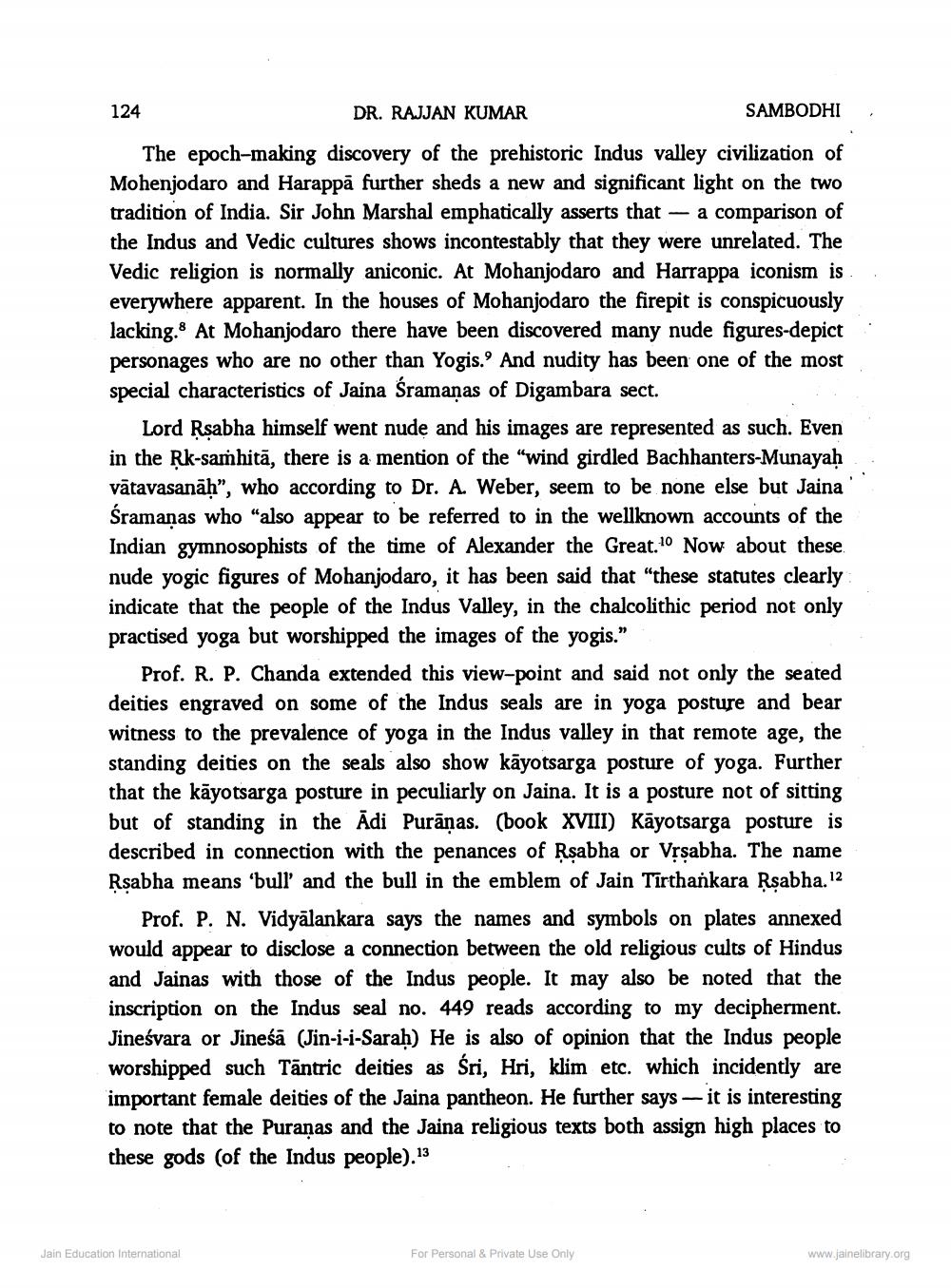________________
124
DR. RAJJAN KUMAR
SAMBODHI
The epoch-making discovery of the prehistoric Indus valley civilization of Mohenjodaro and Harappă further sheds a new and significant light on the two tradition of India. Sir John Marshal emphatically asserts that - a comparison of the Indus and Vedic cultures shows incontestably that they were unrelated. The Vedic religion is normally aniconic. At Mohanjodaro and Harrappa iconism is everywhere apparent. In the houses of Mohanjodaro the firepit is conspicuously lacking. At Mohanjodaro there have been discovered many nude figures-depict personages who are no other than Yogis. And nudity has been one of the most special characteristics of Jaina Sramaņas of Digambara sect.
Lord Rsabha himself went nude and his images are represented as such. Even in the Rk-samhitā, there is a mention of the "wind girdled Bachhanters-Munayah vātavasanah”, who according to Dr. A. Weber, seem to be none else but Jaina' śramanas who "also appear to be referred to in the wellknown accounts of the Indian gymnosophists of the time of Alexander the Great. Now about these nude yogic figures of Mohanjodaro, it has been said that "these statutes clearly indicate that the people of the Indus Valley, in the chalcolithic period not only practised yoga but worshipped the images of the yogis."
Prof. R. P. Chanda extended this view-point and said not only the seated deities engraved on some of the Indus seals are in yoga posture and bear witness to the prevalence of yoga in the Indus valley in that remote age, the standing deities on the seals also show kāyotsarga posture of yoga. Further that the kāyotsarga posture in peculiarly on Jaina. It is a posture not of sitting but of standing in the Adi Purānas. (book XVIII) Kāyotsarga posture is described in connection with the penances of Rsabha or Vrsabha. The name Rsabha means 'bull' and the bull in the emblem of Jain Tirthankara Rsabha. 12
Prof. P. N. Vidyalankara says the names and symbols on plates annexed would appear to disclose a connection between the old religious cults of Hindus and Jainas with those of the Indus people. It may also be noted that the inscription on the Indus seal no. 449 reads according to my decipherment. Jineśvara or Jineśā (Jin-i-i-Sarah) He is also of opinion that the Indus people worshipped such Tântric deities as ŚriHri, klim etc. which incidently are important female deities of the Jaina pantheon. He further says it is interesting to note that the Puranas and the Jaina religious texts both assign high places to these gods of the Indus people).13
Jain Education International
For Personal & Private Use Only
www.jainelibrary.org




